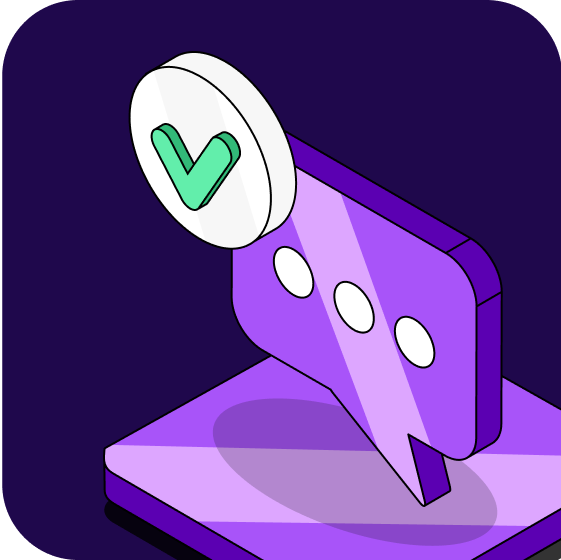What is a user interface (UI)?
The user interface (UI) is the visual and interactive elements through which users interact with and navigate a mobile app.
This includes everything users see and engage with while active in the app, including buttons, icons, text, forms, and other graphic elements. The UI creates the look and feel of the app while serving as a bridge between the user and the software capabilities within. It should provide an intuitive and visually appealing experience that makes it easy for users to accomplish tasks and get value from the app.
For example, when using a mobile app to communicate, the chat UI is where users create, send, and receive messages. This interface is made up of text blocks, buttons, a color theme, images, and other elements. Apps contain a range of different user interfaces that cater to different app functionalities and are designed using a variety of interlocking components.
Components of a mobile app UI
Layouts: The content on the screen is arranged to be logically organized, readable, and easy to navigate, including the home screen, navigation menus, setting screens, forms, and more.
Visual design: The colors, typography, icons, images, and graphical elements create an overall look and feel for the app that aligns with your brand identity.
Navigation: The system through which users move between screens and access different app parts, including navigation bars, side menus, buttons, and gestures.
Interactivity: The app interface should be responsive to user interaction, allowing them to input data, make selections, and take actions. On-screen elements should respond smoothly to taps, swipes, touch gestures, and other actions.
Controls and elements: The interactive elements that enable users to input information and interact, including buttons, icons, checkboxes, sliders, and more.
Feedback: Users receive visual or auditory cues that indicate whether an action has succeeded or is in progress, including button color change, loading indicators, input prompts, or error messages.
Gestures: Mobile devices support a range of touch gestures like tapping, swiping, pinching, and dragging that enhance user interaction and navigation.
Accessibility: The UI should be usable by people of different abilities and disabilities, including considerations for adjustable font sizes, color contrast options, screen reader support, and other accessibility features.
Responsive design: The UI must adapt to different mobile screen sizes and orientations, dynamically arranging the layout and content to ensure visibility and usability on different devices.
Branding: The UI should align with the brand identity to create a cohesive experience that reinforces the association between the app and the business.
How to build a mobile app chat UI
A well-designed chat UI hinges on a balance of design quality, usability, and user experience. Building chat functionality can be resource-intensive for businesses due to its complexity and many interlocking UI parts. To simplify the process of building intuitive, on-brand UIs, developers have access to two helpful resources:
UI kits: A collection of ready-made design elements, UI components, and templates that help developers build and customize the chat UI. Pre-built components help to streamline and expedite the design process while ensuring a cohesive, brand-specific, and appealing look and feel to the chat experience. UI kits follow best practices and design principles, providing developers with modular components to create custom-branded chat interfaces without starting from scratch.
SDKs (software development kits): A ready-to-use set of tools that enable you to launch an application on a specific platform or programming language. An SDK often includes a UI kit and resources like code libraries, developer tools, documentation, and other resources for integrating chat functionality into your app. A chat SDK simplifies and accelerates development by providing developers with modular, reusable components instead of starting from scratch, plus instruction on how to launch that app on a given platform effectively.
A well-designed user interface creates an intuitive, visually appealing experience that makes it easy for users to accomplish tasks and get value from the app. Developers often turn to UI kits to simplify the process of building and customizing UX-optimized app interfaces. UI kits are available from Sendbird and other leading in-app communications platforms.

Try Sendbird
Build your in-app communications without the challenge.

